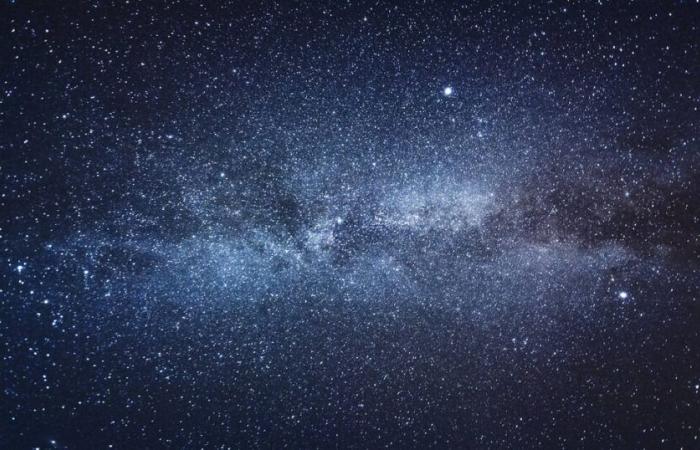Researchers have managed to produce 300 to 400 grams of stardust. A world first, which improves our understanding of the solar system.
Stardust, suspended in space, floats in the interstellar medium. A powder with a magical evocation and an almost impossible conquest. The NASA probe – the aptly named Stardust – had worked for seven years to capture a few microscopic particles brought back from the confines of the solar system in 2006. Researchers from the University of Côte d’Azur and the ENS of Lyon did not not traveled so far and so long. They managed to produce 300 to 400 grams of stardust in the laboratory. A world first. “We can dream, allows cosmochemist Guy Libourel, professor at the University of Côte d’Azur and researcher at the Lagrange laboratory in Nice, to coordinate this work published on October 23 in the journal Nature Astronomy. In our research, we try to go back in time and tell the cosmic story.” Because this creation of stardust opens up avenues for understanding the universe, right down to the origin of life. Let’s relight the star in the laboratory.
In space, far above our heads, the stars are the source of this dust. At the end of their life, they eject gas. This condenses as it moves away from the star and cools. A solid material called dust then forms. On Earth, it is not possible to create a carbon-rich star on a bench and then wait for it to die. So, researchers use a plasma torch. This device – from the Paris-PSL Mines laboratory in Sophia-Antipolis under the leadership of Laurent Fulcheri and Vandad Rohani – looks like a mini-rocket. Feet for support, a long spindle for the reactor and a cap for the electrodes. The torch allows very high temperatures to be obtained, between 5,000 and 10,000°C.
“I can almost touch them with my finger”
“Every time I turn on the machine, I feel like I’m turning on a star,” one of the researchers confided to Guy Libourel one day. It didn’t take much to spark a little flame in the scientist’s head. He buys 5 kilos of meteorite, “fall from the sky” in the Sahara. Crushed into small pieces of 20 microns, the powder is injected into the hot zone of the plasma torch, for the first and only time in 2018. “The manipulation consists of reproducing the gaseous environment of a star, explains Guy Libourel, back in front of the machine on Wednesday October 30. When the particles are injected into the torch, they vaporize as a gas. As the gas cools, it condenses. We then collect different types of dust.” Stardust is born.
The scientific community knew how to model the principle of dust formation on a computer. But this material had never been created in the laboratory. “I have been studying the stars for twenty years, observing them with telescopes, and now I can almost touch them with my finger.” rejoices Eric Lagadec, astrophysicist at the Côte d’Azur Observatory, who took part in the project. This day in March 2018, the experience lasts one hour. Guy Libourel looks through the portholes at the production of stardust in the plasma. “It’s a success story, he debriefs. When you do an experiment, it’s rare that it works the first time.” A graphite backing is used as a grain landing strip. This stardust is now preserved at the Côte d’Azur Observatory. The largest grains measure 20 thousandths of a millimeter.
“Go back in time”
The formation of this stardust is fundamental to that of life. When they float in interstellar space, its grains support organic chemistry reactions. Life after death. Their laboratory production allows us to better understand how the solar system was formed and how stars die – which will happen to the sun in 5 billion years. “These stars form most of the carbon in the universe, which is the basis of life, points out Eric Lagadec. With this work, we contribute to the creation of the common knowledge of humanity.”
Guy Libourel wants to continue to “make the meteorites talk”. Pour “go further”, he imagines a plasma torch “dedicated to research, for astrophysics and the physics of extraterrestrial or innovative materials”. The one used in 2018 now serves as an industrial pilot for an American company. With this future instrument “which does not exist in the world”, he plans to test the effect of pressure, gas speed and the impact of light on the formation of dust. “With this type of device, we can create environments that resemble the turbulent environment around the stars, develops Guy Libourel. We reproduce physical conditions to which we will never have access. It’s as if these experiences allow us to go back in time and travel distances measured in light years.” Stardust production expands the horizons.






